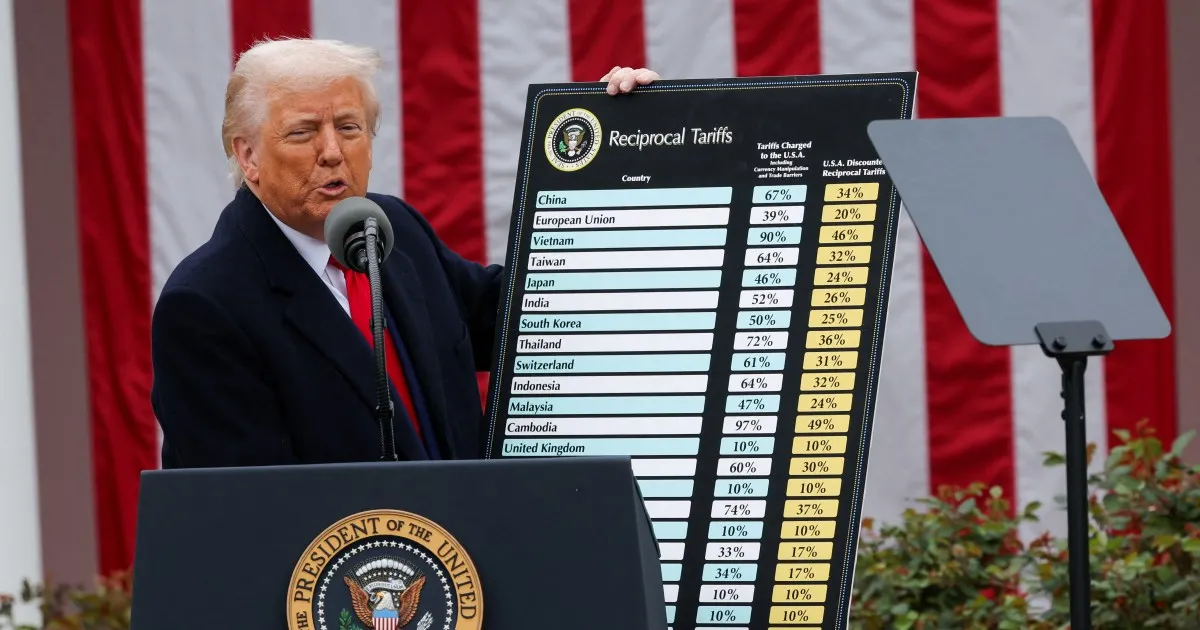On April 2, 2025, President Donald Trump announced sweeping new tariffs targeting China, significantly escalating the ongoing trade tensions between the two nations. The newly imposed tariffs include a baseline 10% tariff applied universally to all countries, with additional penalties for countries considered major trade offenders.
Notably, a 34% tariff has been placed on Chinese imports, bringing the cumulative tariff on China to 64%. This marks the most severe tariff action during Trump’s administration, adding to previously imposed hikes, such as 20% tariff increases in early 2025. These actions follow targeted measures against Chinese technology firms and are seen as part of a broader strategy to challenge China’s trade practices.
China Urges Dialogue, Depreciates Yuan Amid Tariff Tensions and Diplomatic Efforts
In response to the new tariffs, China’s Ministry of Commerce urged the U.S. to reconsider its unilateral measures and engage in “equal dialogue” with its trading partners. Despite the strong rhetoric, China has yet to take any major retaliatory steps, signaling a restrained response for the time being.
However, reports have emerged that Chinese President Xi Jinping plans to meet with European leaders in Vietnam in mid-April to strengthen economic ties with the European Union and ASEAN nations. This diplomatic move may signal China’s efforts to counterbalance U.S. influence, particularly in sectors like electric vehicles (EVs) and artificial intelligence (AI), where China is emerging as a global leader.

Following the tariff announcement, China’s currency, the yuan, experienced significant depreciation. On April 3, the People’s Bank of China (PBoC) lowered the Daily Central Parity Rate for the yuan, marking the largest adjustment since December 2023. This action could be seen as a move to mitigate the impact of the new tariffs on China’s export-driven economy by making its goods cheaper on international markets.
Despite this, analysts note that further devaluation could provoke additional scrutiny from the U.S. and lead to even more tariffs. The USD/CNY exchange rate reached its highest level since February 2025, highlighting the growing tensions in the currency markets.
Asian Markets Decline Amid Tariff News, Raising Concerns Over Future Economic Stability
In the wake of the tariff news, Asian markets experienced a notable decline. The Hang Seng Index dropped 1.77%, while the CSI 300 and Shanghai Composite Index saw losses as well. The sell-off in equity markets overshadowed positive economic data from China, including a strong performance in the services PMI for March.
Despite the tariffs, Chinese stimulus measures appear to be gaining traction, and Beijing’s shift toward a consumption-led economy could help mitigate the effects of U.S. tariffs. Nevertheless, any failure to implement these policy changes, or a rise in geopolitical tensions, could further weigh on market sentiment and lead to continued volatility in Hong Kong and mainland China.
Looking ahead, market participants are closely watching how China will respond to the new tariff measures. A significant devaluation of the yuan could lead to a more pronounced sell-off in Chinese equity markets and may intensify fears of a full-scale trade war.
However, if China maintains a measured response and stabilizes the exchange rate, it could help rebuild investor confidence. The global market implications of this trade dispute remain uncertain, with China’s next moves likely to be crucial in determining the future of U.S.-China relations and global economic stability.

